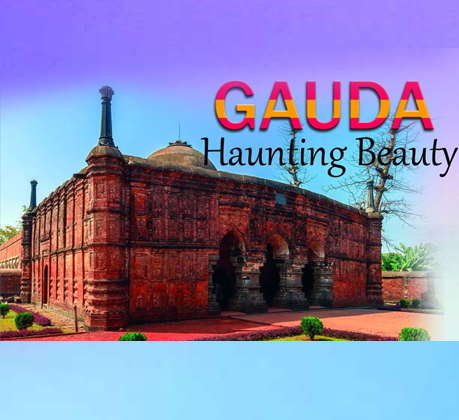The city of Gauda is little more than a ghost town today. Straddling the international border between West Bengal and Bangladesh, it was the opulent capital of Bengal between the 12th and 16th centuries CE. Located in modernday Malda
district, Gauda was the seat of more than a dozen Islamic dynasties and noted for its architectural splendour. But the remains of its stunning mosques, gateways, tombs and palaces mirror its broken spirit, one than never recovered from a
crushing blow in 1575.
Between the 8th and 12th centuries, Bengal was ruled by the Buddhist Pala dynasty. As the Pala Empire began to fall apart after the death of Ramapala in 1130 CE, the Senas, a Hindu dynasty, came into prominence.
Samantasena was a warrior from the region that now forms the Indian state of Karnataka. In his old age, he had become an ascetic and settled on the banks of the Ganges, somewhere in modern- day Bardhaman district in West Bengal. His son
Hemantasena seems to have been a ruling chief. As central power under the Palas waned, the Senas grew in importance. Hemantasena’s son Vijaysena married a princess of the Rarh region in Southern Bengal and ultimately brought all of Bengal
under his rule. It was Vijaysena’s grandson, Lakshmansena who laid the foundations of the city of Gauda and made it his imperial capital, with a second minor capital in Nadia. Lakshamnsena must have been around 60 years old when he ascended
the throne in 1179 CE. Under his father, he had been a successful military leader and had conducted campaigns against the Kamarupa kingdom of Assam and the Kalinga kingdom of Odisha. Lakshmansena had his new capital named ‘Lakshmanavati’,
also referred to as Lakhnauti. Almost nothing from this period of the city’s history now survives.
In the late 12th century, Hindu rule in North India had weakened sufficiently to permit Turkic raiders to start plundering the country. Among those leading the raids was an adventurer named Mohammed Bakhtiar Khilji. Around 1200 CE, Khilji,
after plundering a monastery in Bihar, proceeded with his cavalry towards Bengal.
Lakshmansena had been receiving news of the plunder his territories by Turkic cavalry, and had posted armies in the mountain passes of Rajmahal to intercept them, but Khilji surprised him by turning up right at his doorstep, in Nadia. What
happened next was documented 50 years after the events by Minhaj al-Siraj Juzjani in his book Tabaqat-i Nasiri.

















Add Comment